As the new season opens, confidence is high at ENB, just as it should be given the roaring success of recent programmes featuring the latest work of iconoclast William Forsythe. His classical steps set to disco raised the roof.
The company’s current mixed bill, R:Evolution, also contains some Forsythe, but within a more sober, even academic frame, the idea being to track the evolution of ballet across eight decades: from George Balanchine and Martha Graham – two distinct voices of the 1940s – to a Forsythe classic from 1992, to a grandly conceived new work from internationalist David Dawson.
First comes Balanchine’s Theme and Variations, an abstract tutu number bedecked with glittering chandeliers and girls in tiaras. The first impression is all speed and sparkle, of neat criss-crossings and fugal entries, but you soon begin to wonder if ENB hasn't bitten off more than it can chew. These steps are technically fiendish, even for the corps de ballet, and the tempo – set by Tchaikovsky’s Orchestral Suite No. 3 (final movement) – is relentless. One segment sees the entire complement of soloists, demi-soloists and corps pirouetting in sync as the orchestra gallops along. The stage picture is dazzlingly pretty, like twirling umbrellas. But for those on stage, it’s tough: when the music stops, they must all land from their final pirouette at once. Any late arrivals are horribly obvious, be they only a split-second behind, as some were. No surprise, then, that ENB had shipped in guest principals from abroad to fill the boots of the work’s original leads – among them the legendary Alicia Alonzo, whose technique was so phenomenal that Balanchine would throw increasingly extreme challenges in her way. Alice Mariani from La Scala rose to these with aplomb, her chains of linked steps unfailingly crisp and polished at speeds that would have felled many others. Ricardo Castellanos, from the Norwegian Ballet, made a fine supportive partner, but fluffed some of his own solo challenges, which may have made some in the corps de ballet feel a bit better. For everyone on stage, this must be a feat of endurance. But as the work hurtles towards its terrific finale, the effect is of utterly joyous uplift.
No surprise, then, that ENB had shipped in guest principals from abroad to fill the boots of the work’s original leads – among them the legendary Alicia Alonzo, whose technique was so phenomenal that Balanchine would throw increasingly extreme challenges in her way. Alice Mariani from La Scala rose to these with aplomb, her chains of linked steps unfailingly crisp and polished at speeds that would have felled many others. Ricardo Castellanos, from the Norwegian Ballet, made a fine supportive partner, but fluffed some of his own solo challenges, which may have made some in the corps de ballet feel a bit better. For everyone on stage, this must be a feat of endurance. But as the work hurtles towards its terrific finale, the effect is of utterly joyous uplift.
Created and performed in the same year, 1947, Errand into the Maze, by Martha Graham, is an arch example of the opposite tendency. Sleek, austere and monochrome, this is movement based on what Graham called “the breath impulse”. Made for just one barefoot female and one male dancer (main picture) Errand is a product of the choreographer’s obsession with the heroines of Greek myth, while bizarrely telling the story of Theseus and the Minotaur and missing out Ariadne. Graham (who originally danced The Woman, in a grand white gown of her own design) imagined for herself “an inner Theseus” with the strength to fight and destroy The Creature of Fear (not a giant bull, then, so much as a metaphor for what threatens and oppresses womankind). So far, so convoluted. But for those who manage to suppress the initial urge to snigger, the angular strangeness of the piece and its air of fierce moral struggle act like an ancient spell.
 Absolute dramatic commitment from the two dancers is essential. And Emily Suzuki gives it 110 per cent, whether inhaling and exhaling importantly, or stroking the trunk of Isamu Noguchi’s sculptural V-shaped bone-tree, the only object on stage apart from the rope that marks the way through the maze. Her fight with Rentaro Nakaaki’s beast is a protracted affair, in the course of which it’s never clear who’s on top until he flops to the floor dead. The score by Gian Carlo Menotti, all sparse, punctuating drumbeats and heraldic horns, is all of a piece. To my knowledge, Errand into the Maze hasn’t been seen in the UK for decades. It may be weird, but it’s worth the trip.
Absolute dramatic commitment from the two dancers is essential. And Emily Suzuki gives it 110 per cent, whether inhaling and exhaling importantly, or stroking the trunk of Isamu Noguchi’s sculptural V-shaped bone-tree, the only object on stage apart from the rope that marks the way through the maze. Her fight with Rentaro Nakaaki’s beast is a protracted affair, in the course of which it’s never clear who’s on top until he flops to the floor dead. The score by Gian Carlo Menotti, all sparse, punctuating drumbeats and heraldic horns, is all of a piece. To my knowledge, Errand into the Maze hasn’t been seen in the UK for decades. It may be weird, but it’s worth the trip.
Skip forward a half century and William Forsythe changes the tune again. As the title Herman Schmerman says: it’s meaningless, not even a play on words, just playful, a bit of fun. Likewise, the cohort of three female and two male dancers, in deep orange swimsuits, ask of us nothing more than to observe and enjoy their boundless bouncing innovations (pictured above) on the basic alphabet of ballet, much of it pushed off-kilter, like exclamations in italics. ENB has tackled this piece before, and it’s a happy addition to this programme, every one of the five dancers radiating confidence and power.
In an already meaty evening, David Dawson’s Four Last Songs (new in 2023) arrives like the main dish you ordered but now wonder if you’ll have room for. Richard Strauss’s song cycle is a huge piece of music with huge resonance for many, not only for its lushly romantic style of composition, but for its poetic texts which elide observations of the natural world with a calm acceptance of death. The choreographer is clearly a lifelong fan who holds the music in such high regard that he puts it front and centre, placing the soprano, Madeleine Pierard, magnificent in a black silk ballgown, on stage, to one side, from where she watches the dancers closely. It’s as if they are embodying her thoughts. A monochrome cloudscape dominates the back wall in Eno Henze’s design, the stage left bare to allow maximum acreage for Dawson’s sweeping choreography, repeated swathes of apparently naked bodies driven across the space like spent leaves. Fluidity is paramount: there is not a sharp angle to be seen, only a seamless merging of one idea into the next. My guess is that many of the gestures and shapes (pictured above) – most obviously a line of dancers lying asleep, and later figures supported in flight – are direct responses to lines in the poems. It's a little frustrating not to be able to match them all up – you feel you’re missing out. The only recourse is to give yourself up to the stream of imagery and the enormous, gorgeous sweep of orchestral sound. The English National Ballet Philharmonic and musical director Maria Seletskaja are clearly enjoying the ride.
A monochrome cloudscape dominates the back wall in Eno Henze’s design, the stage left bare to allow maximum acreage for Dawson’s sweeping choreography, repeated swathes of apparently naked bodies driven across the space like spent leaves. Fluidity is paramount: there is not a sharp angle to be seen, only a seamless merging of one idea into the next. My guess is that many of the gestures and shapes (pictured above) – most obviously a line of dancers lying asleep, and later figures supported in flight – are direct responses to lines in the poems. It's a little frustrating not to be able to match them all up – you feel you’re missing out. The only recourse is to give yourself up to the stream of imagery and the enormous, gorgeous sweep of orchestral sound. The English National Ballet Philharmonic and musical director Maria Seletskaja are clearly enjoying the ride.



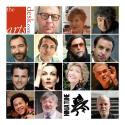


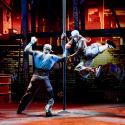


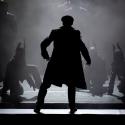
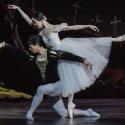

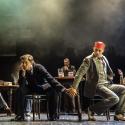

Add comment